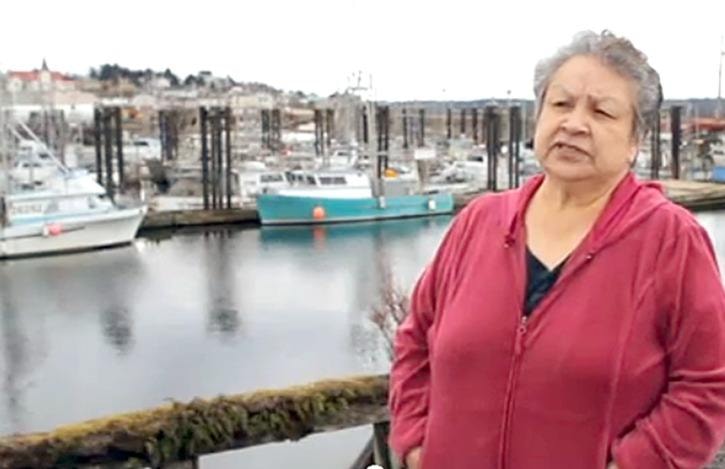Near Prince Rupert on B.C.'s North Coast, a group of grandmothers has been keeping Lax Kw'alaams children and youth connected to their culture and community, while giving them a voice in planning their futures.
The Tsimshian elders call themselves Nagantsi'istk (Ancestors/Grandmothers) and act as positive role models who build trust with the children, their families and their community through communication. For example, the grandmothers contacted each child in care from their community through video conferencing before meeting each child in person.
This Christmas, the grandmothers are sending cards to all of the children in the province who belong to their community. This personal approach helps the children feel more comfortable as they get back in touch with their roots and helps them understand just how much the grandmothers and the community care about them.
Many Aboriginal and First Nations children and youth in care are placed with families who live outside of their home communities. Some lose the connection to their culture and to their families of origin. Others may feel like they haven't had a voice in planning for their futures, including developing permanency plans that might consist of adoption, living with a relative or possibly being supported to live on their own.
For three years, the grandmothers have been working with families, local agencies, the community and the Ministry of Children and Family Development to ensure that all parties, including the children, are able to provide input into the children's permanency plans. As well, they are collaborating with social workers to help identify local foster homes so children and youth in care don't have to leave the community.
"Our children are paramount and we want them to come home," said Helen Johnson, who helped found the group.
"Many of them really don't know who they are. We need to bring them back so they know where they come from, where they belong and how much we care for them. It's important to them and important to us."
Through activities such as berry picking or fishing and fish-smoking camps, the grandmothers also provide cultural teachings to introduce or maintain the children's connection to their cultural roots and foster a sense of belonging to their community.
"These grandmothers have a genuine passion and concern for the Lax Kw'alaams children and are taking action to ensure their children stay connected to their community, heritage and culture," said Minister of Children and Family Development Stephanie Cadieux.
"Their efforts are helping to promote healing for families in the community and are thereby reducing the number of children being taken into care."
Along with helping to identify local families who can provide permanent homes for the children that are in care, members of Nagantsi'istk also partner with the ministry to work with families in crisis and help prevent children from coming in to care in the first place.
The goal of their work is to have children return to, or remain with, their families wherever possible; and whenever children do have to be taken into care, they work to ensure the children have an established permanency plan that keeps them in their community. Such permanency plans work to ease the impact that being taken into care has on the children and helps preserve their community and cultural connection.
Through this approach, child welfare services are provided in the context of Tsimshian culture, building greater unity and trust between families, the community and the social workers involved.
The efforts of Nagantsi'istk have been noticed by other groups in the province who are now looking to emulate their approach. In fact, this year, there are three Aboriginal agencies and three First Nations involved in similar projects that are creating permanency plans for their children in care across the four avenues of permanency: cultural, physical, legal and relational.
